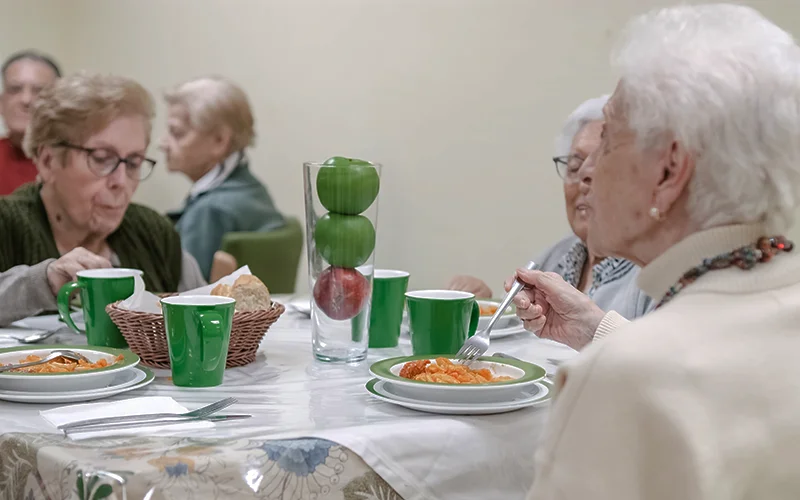From KFF Health News — By Paula Span —
A prime example of elderspeak: Cindy Smith was visiting her father in his assisted living apartment in Roseville. An aide who was trying to induce him to do something — Smith no longer remembers exactly what — said, “Let me help you, sweetheart.”
“He just gave her The Look — under his bushy eyebrows — and said, ‘What, are we getting married?’” recalled Smith, who had a good laugh. Her father was then 92, a retired county planner and a World War II veteran; macular degeneration had reduced the quality of his vision, and he used a walker to get around — but he remained cognitively sharp.
“He wouldn’t normally get too frosty with people,” Smith said. “But he did have the sense that he was a grown-up and he wasn’t always treated like one.”
People understand almost intuitively what “elderspeak” means.
“It’s communication to older adults that sounds like baby talk,” said Clarissa Shaw, a dementia care researcher at the University of Iowa College of Nursing and a co-author of a recent article that helps researchers document its use. “It arises from an ageist assumption of frailty, incompetence and dependence.”
Its elements include inappropriate endearments.
“Elderspeak can be controlling, kind of bossy, so to soften that message, there’s ‘honey,’ ‘dearie,’ ‘sweetie,’” said Kristine Williams, a nurse gerontologist at the University of Kansas School of Nursing and another co-author of the article. “We have negative stereotypes of older adults, so we change the way we talk.”
Or caregivers may resort to plural pronouns: Are we ready to take our bath? There, the implication “is that the person’s not able to act as an individual,” Williams said. “Hopefully, I’m not taking the bath with you.”
Sometimes, elderspeakers employ a louder volume, shorter sentences or simple words intoned slowly. Or they may adopt an exaggerated, singsong vocal quality more suited to preschoolers, along with words like “potty” or “jammies.”
With what are known as tag questions — it’s time for you to eat lunch now, right? — “You’re asking them a question but you’re not letting them respond,” Williams said. “You’re telling them how to respond.”
Studies in nursing homes show how commonplace such speech is. When Williams, Shaw and their team analyzed video recordings of 80 interactions between staff and residents with dementia, they found that 84% involved some form of elderspeak.
“Most of elderspeak is well intended. People are trying to show they care,” Williams said. “They don’t realize the negative messages that come through.”
Among nursing home residents with dementia, for example, studies have found a relationship between exposure to elderspeak and behaviors collectively known as resistance to care.
“People can turn away or cry or say no,” Williams said. “They may clench their mouths shut when you’re trying to feed them.” Sometimes, they push caregivers away or strike them.
…

